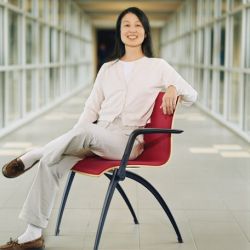
When the White House calls, you pick up the phone. In February, President Obama pegged Melissa Hathaway of the National Security Council to do a 60-day review of the nation’s cybersecurity policy. Midway through the 60 days, her office called me at the National Science Foundation asking me to reach out to the academic community of researchers and educators for their input.
I quickly assembled a teleconference meeting for Ms. Hathaway to talk with more than 30 academics representing a broad range of interests from cryptography and security to networking and distributed systems, from privacy and law to usability and software engineering. In FY09 Computer and Information Science and Engineering (CISE) is investing $133M in cybersecurity research and education, including $65M in our showcase Trustworthy Computing program, which cuts across all three divisions in CISE, and the rest going into our divisions’ core programs. The Trustworthy Computing program currently supports 387 PIs or co-PIs.
In less than two weeks after the teleconference, the academic community produced two documents as input to the review: one, a high-level set of recommendations on the role academia can play in the nation’s cybersecurity agenda; and a second, answers to seven out of eight technical questions posed by Ms. Hathaway during the teleconference. The community was grateful to have this opportunity to participate in the review, and I was grateful to see how extremely busy, overworked faculty members were able to make the time to respond so quickly and thoughtfully.
Then we all waited for the rollout.
Finally, last Friday, May 29, the White House posted on this web site http://www.whitehouse.gov/CyberReview/ : the 60-day study; more than 100 supporting materials, including the two aforementioned documents; and a video, including a few sound bites from me.
In his speech for the 60-day study rollout, President Obama cited the dual aspects of information technology: its criticality to our nation’s well-being and “the risks that come with it.” And music to the ears of the academic community, he said, “We will continue to invest in cutting-edge research and development necessary for the innovation and discovery we need to meet the digital challenges of our time.”



Join the Discussion (0)
Become a Member or Sign In to Post a Comment